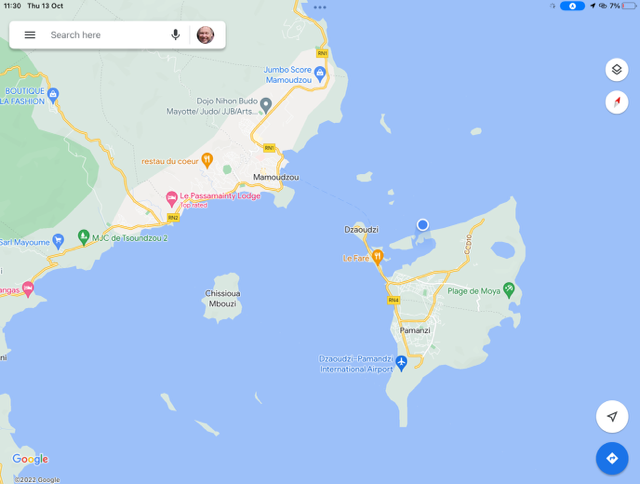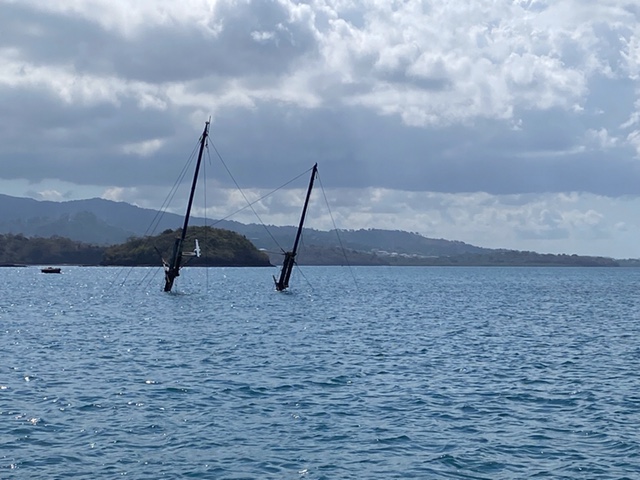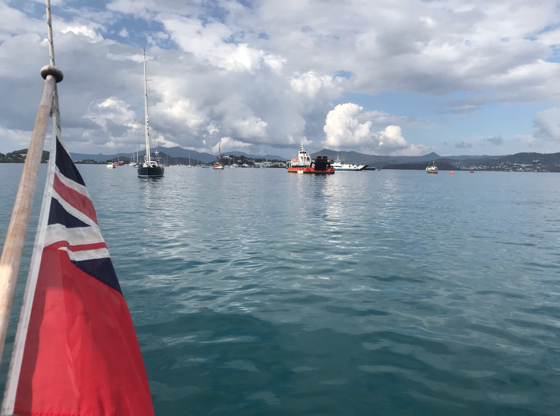Mayotte Anchorage

12:46.53S 45:16.12E The anchorage here in Mayotte is large and sheltered, being within the lagoon and adjacent to Petite Terre Ile Pamandzi. Access to the main island is via a car ferry that runs frequently and is always busy. As ever we are right under the flight path into the airport. Other than the yacht club, facilities for yachts are minimal. Anything required in the way of parts has to be flown in via Paris and Reunion. It is a very self sufficient live-aboard community here! Being France many of the yachts are steel or aluminium and look tired. There are two washed up wrecks along the shore and one or two afloat that defy their badly rusted hulls to remain so. The masts of what may have been an elegant wooden ketch rise out of the sea just behind us. Unless stuck waiting for parts, which at least two other yachts here are, it is the perfect place to recuperate after getting around Madagascar and before heading off across to Mozambique and down to South Africa. We first anchored in front of a large motorised barge which is a bit like a huge landing craft. Annie thought we were too close to the moored vessel but I was comfortable. All was well until one night Annie called me up into the cockpit and instead of our normal view across the anchorage we seemed to be tied alongside a metal harbour wall. It was of course the stern of the barge that we were lying against. Annie had put our large round fender on the side for just such an eventuality. Furthermore our dinghy was hung on the side of Vega and acting like a huge fender at the front. With the barge right over our anchor all we could do was let out more anchor chain and fall back and away from the barge. At this point we thought it best to lower the dinghy in case we swung into the barge again. I soon noticed that the dinghy was filling with water - having removed the bung which is what you do to prevent rainwater accumulating when the dinghy is lifted out of the water by a halyard. It must have taken half an hour to sort things with a mixture of panic and laughter. Our repair work has included the toilet, which had refused to either flush or empty. I tracked down a large and elegantly shaped lump of calcium deposit that was wedged in the flapper valve. Removal of the lump has restored life to the toilet but it needs priming with water tipped into the bowl and so it is still work in progress. The other repair that has taken a lot of time to investigate and will likely prove fruitless is the loss of data to our cockpit wind instrument. We know that there is not a problem between the connection at the base of the mast and the cockpit instrument because it works when we connect the new cable, attached to the old anemometer. The problem is therefore likely to be with the mast head fitting into which the cable is sealed. We thought replacement of this together with the cable would be straightforward but oh no, Selden masts have a drip loop tied in the cable run at the base of the mast and before the cable is fed down a corrugated plastic tube though the mast step. This loop cannot be accessed without removing the mast and prevents the cable from being withdrawn. The more we think, investigate and seek advice the more we realise this is a job for South Africa. As a temporary option we may fit the new cable onto the pushpit rail. At least we will then have some wind information - albeit it will read less than at the masthead and the direction may be less accurate. It’s going to be like sailing a dinghy down to Richard’s Bay. On a more positive front we have found a Carrefour supermarket from which we will provision for the next leg. It is well stocked with all the usual French goodies and we can buy enough tins of cassoulet and tartiflette to keep us in comfort food without the need for the freezer. This we have switched off because a combination of less wind and much less output from the solar panels than in the Seychelles mean that we have been needing to run the engine for one or two hours each day. Without the freezer we can just about manage to keep the batteries charged. There is a fruit and veg market not far away that we have yet to investigate. The only other thing we need to do is refuel. The fuel dock at the harbour side is for petrol only (most of the boats other than the yachts have four stroke outboards) so it looks like a taxi ride to the Total service station with our containers. It only took 60 litres to completely fill the tank meaning we only have three containers to take to the filling station. The weather is very quiet at the moment and this looks set to continue so we will need plenty of fuel on board (400 litres all up, enough for around 200 hours or 8 days). We would like to take the ferry across to the main island for one day and see a lemur or two before we leave and we aim to be heading off on or around Wednesday 19th October.
|



